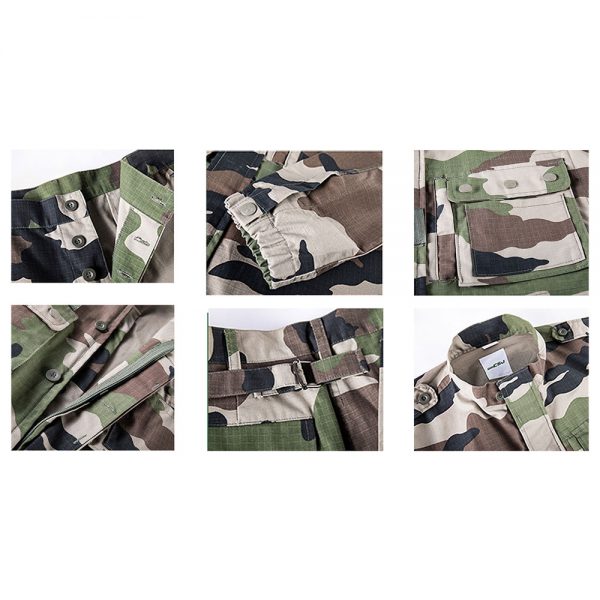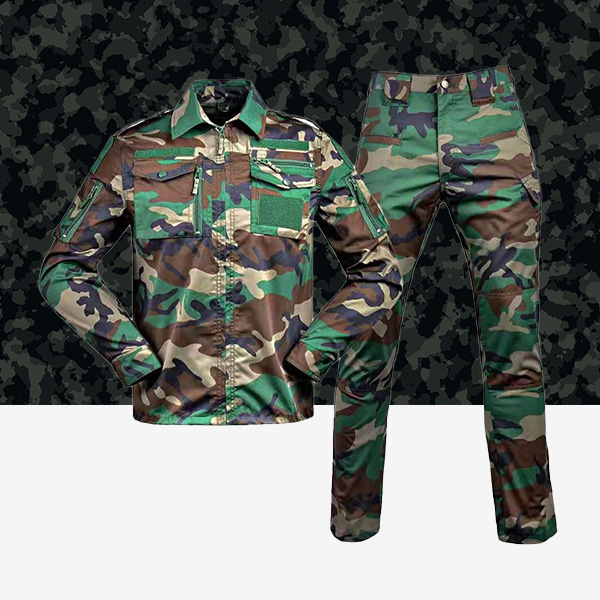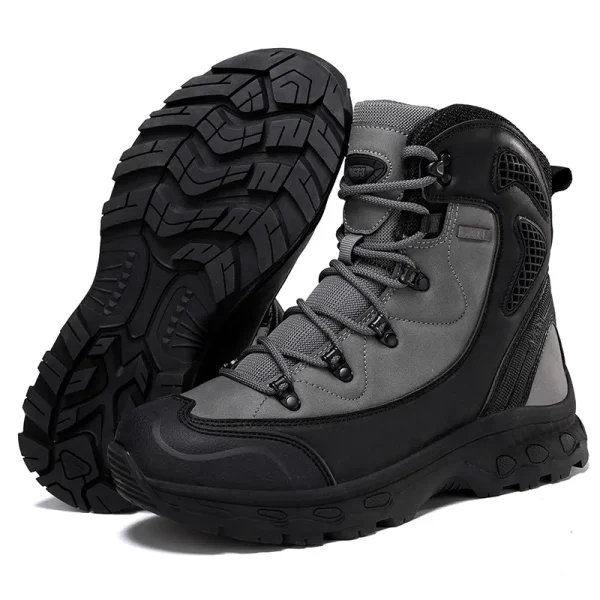Selecting the right camouflage pattern is key for tactical operations, hunting, or outdoor adventures. Military and hunting fans often struggle to pick a uniform that blends well with their surroundings. Choosing the wrong pattern can reduce stealth, safety, and success.
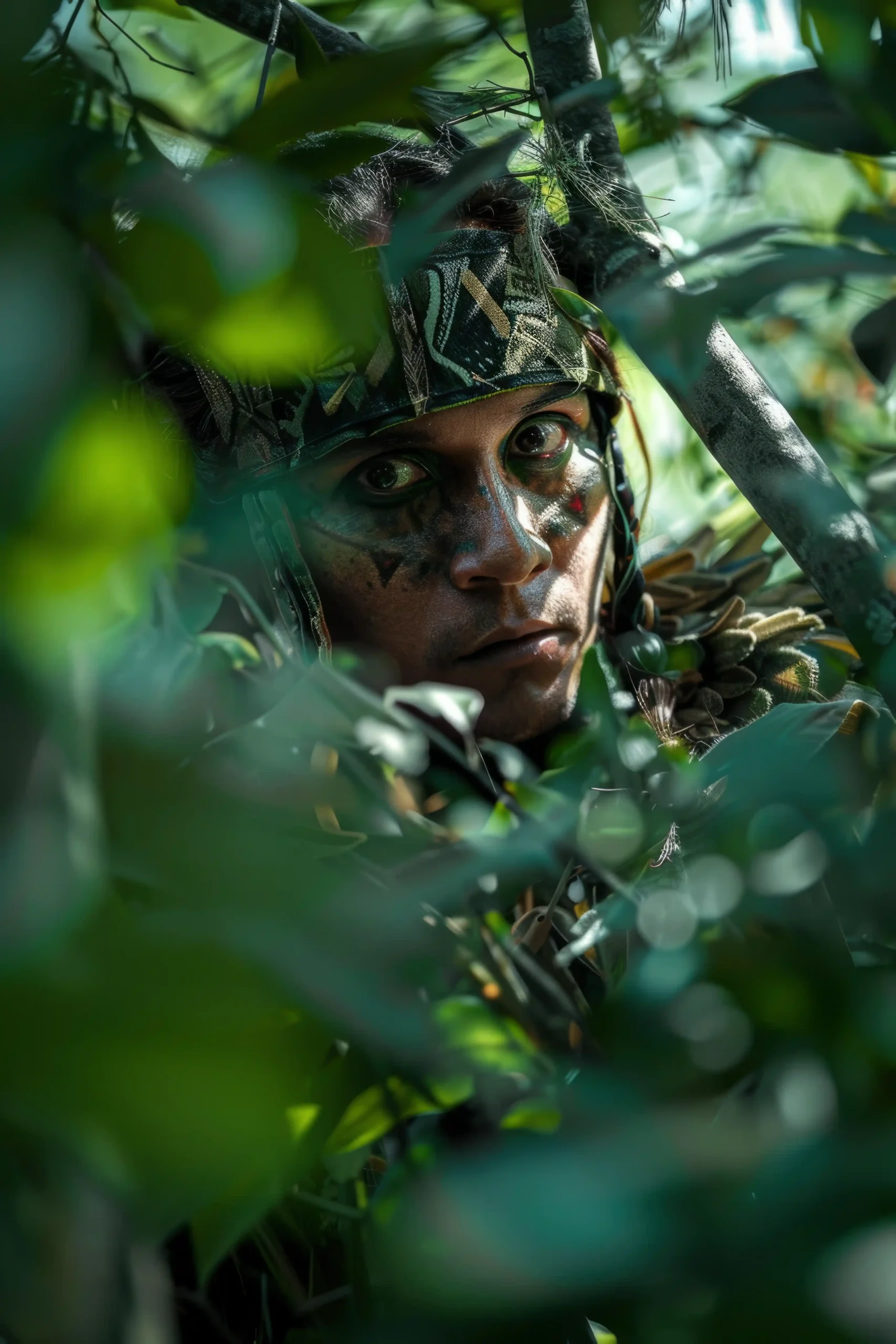
This guide explores jungle and desert camouflage differences. It offers clear tips to help you decide. We focus on tactical uniform color selection, the best camouflage for dense forest, and jungle camouflage effectiveness. We also highlight how Jingming’s F1 Jungle Camouflage excels in specific settings.
Understanding Camouflage: Why It Matters
Camouflage is more than style. It’s a vital tool for staying hidden in tactical or outdoor settings. Whether you’re in thick jungles or dry deserts, the right pattern hides your shape. This makes you harder to spot by enemies or animals. A wrong choice can leave you visible, risking your mission. Let’s look at jungle and desert terrains. We’ll see how uniforms are built to work in each.
The Role of Environment in Camouflage Selection
A camouflage pattern’s success depends on the setting. Jungle and desert areas have unique colors, light, and plants. A pattern that works in one place may fail in another. So, knowing the terrain is crucial for tactical uniform color selection.
Jungle Camouflage: Blending into Thick Greenery
Jungle areas have heavy plants, spotty sunlight, and green, brown, and earthy colors. The best camouflage for dense forest must copy these to hide you well.
Key Features of Jungle Camouflage
Jungle patterns, like Jingming’s F1 Jungle Camouflage, are made for tropical and wooded areas. Here’s what makes them work:
- Color Palette: Mostly green, brown, and black to match leaves, trunks, and shadows.
- Patterns: Leaf-like or blotchy shapes that look like jungle plants.
- Texture: Uses mixed colors to copy the spotty light under trees.
- Durability: Made with water-resistant fabric to handle wet and humid conditions.
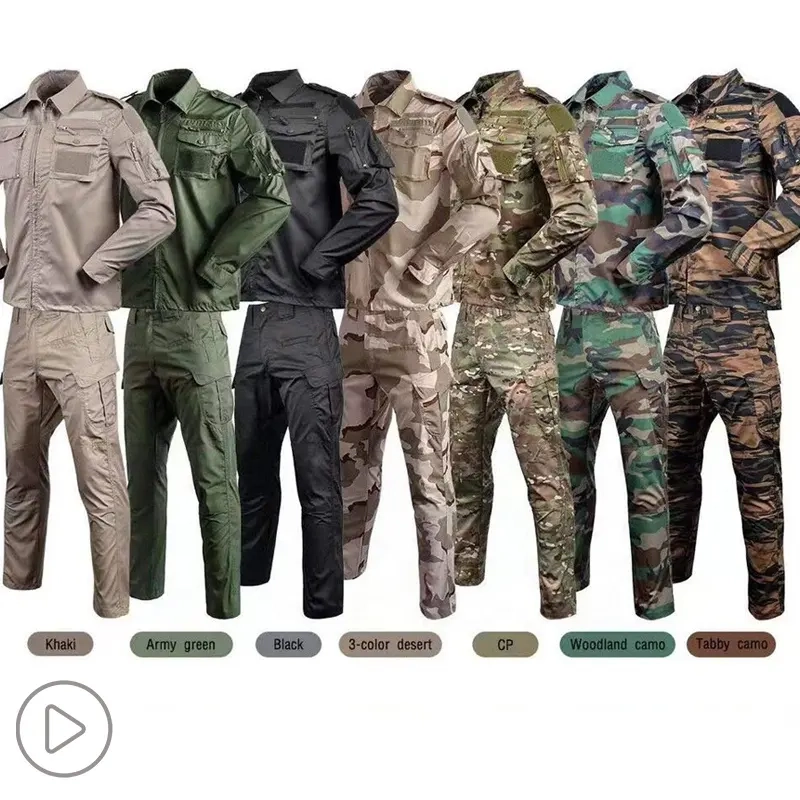
For instance, the F1 Jungle Camouflage has a four-color design. It blends well in thick, shady forests. This pattern proves its jungle camouflage effectiveness in tropical places like Southeast Asia or South American rainforests.
Best Scenarios for Jungle Camouflage
Jungle camouflage is the best camouflage for dense forest when:
- You’re in tropical rainforests with lots of plants.
- You need stealth for secret missions.
- You’re hunting in wooded areas with greenery and shadows.
| Feature | Jungle Camouflage Advantage |
| Color | Green, brown, black blend with plants |
| Pattern | Leafy or blotchy for natural look |
| Environment | Thick forests, tropical jungles |
| Example Product | F1 Jungle Camouflage |
Desert Camouflage: Mastering Dry Lands
Desert areas are open, sandy, and have few plants. Desert camouflage blends into these dry landscapes using light, neutral colors.
Key Features of Desert Camouflage
Desert patterns, like Jingming’s Golden Eagle Set, are made for sandy and rocky areas. Key traits include:
- Color Palette: Sandy beige, light brown, and tan to match desert ground.
- Patterns: Soft, less clear shapes to blend with open land and rocks.
- Material: Airy fabrics to stay cool in hot, dry conditions.
- Versatility: Works in both bright and shaded desert areas.
The Golden Eagle Set uses a mixed pattern. It adapts to different desert conditions. This ensures you stay hidden in flat or rocky areas.
Best Scenarios for Desert Camouflage
Desert camouflage is great when:
- You’re in dry regions like the Middle East or North Africa.
- You’re on missions in open, sandy areas.
- You’re hunting in deserts or dry lands with few plants.
| Feature | Desert Camouflage Advantage |
| Color | Beige, tan, light brown blend with sand |
| Pattern | Soft shapes for open land |
| Environment | Deserts, dry regions |
| Example Product | Golden Eagle Set |
Jungle vs. Desert Camouflage: A Side-by-Side Comparison
To choose wisely, let’s compare jungle and desert camouflage. We’ll look at key factors for tactical uniform color selection.
| Criteria | Jungle Camouflage | Desert Camouflage |
| Primary Colors | Green, brown, black | Beige, tan, light brown |
| Best Environment | Thick forests, tropical jungles | Dry deserts, open lands |
| Pattern Style | Leafy, blotchy, mixed colors | Soft, less clear shapes |
| Lighting Conditions | Spotty sunlight, shadows | Bright sun, few shadows |
| Durability Needs | Water-resistant, tear-proof | Cool, heat-resistant |
| Example Product | F1 Jungle Camouflage | Golden Eagle Set |
Common Mistakes in Camouflage Selection
Many military and hunting fans pick the wrong pattern. This can cause problems. For example:
- Using desert camouflage in a jungle makes you stand out against green plants.
- Wearing jungle camouflage in deserts makes you visible due to dark colors.
- Ignoring seasonal changes, like wet seasons in jungles or dry times in deserts, affects blending.
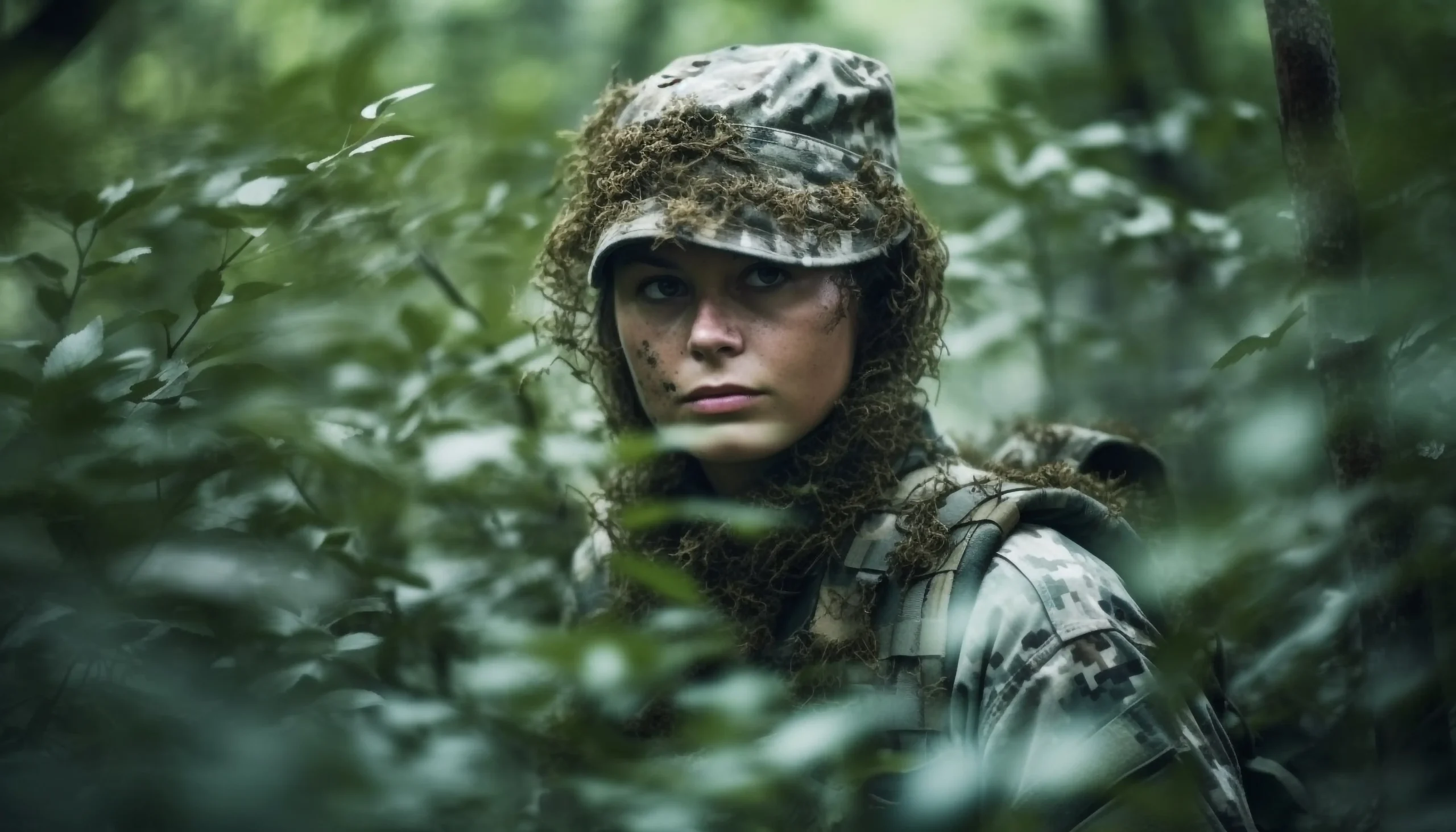
To avoid these errors, check your mission’s terrain, season, and light. Then, pick the right uniform.
About Jingming: Your Trusted Tactical Gear Manufacturer
Jingming makes top-notch tactical products, outdoor gear, bulletproof items, camouflage boots, and custom military solutions. They focus on quality and new ideas. Their gear is strong and works well for military, law enforcement, and outdoor fans. Their tactical uniforms and products are built for tough conditions. Whether in jungles or deserts, Jingming’s camouflage and gear are reliable choices for professionals and adventurers.
Choosing the Right Tactical Uniform for Your Needs
Picking the right camouflage means matching your goals with the environment. Here are simple tips for tactical uniform color selection:
- Check Your Surroundings: Look at the terrain, plants, and light. For thick forests, choose patterns like the F1 Jungle Camouflage. For deserts, pick the Golden Eagle Set.
- Think About Your Mission: Secret missions need jungle patterns to hide movement. Open-area missions need desert camouflage to stay unseen.
- Focus on Strength: Make sure your uniform handles challenges, like jungle humidity or desert heat.
- Test Flexibility: If you’re in mixed terrains, try hybrid patterns that work in both settings.
By matching your uniform to these factors, you’ll boost jungle camouflage effectiveness or desert hiding, based on your mission.
FAQs About Tactical Uniforms
Q1: What is the best camouflage for dense forest areas?
A: The top choice for dense forests is a pattern like the F1 Jungle Camouflage. It uses green, brown, and black to blend with leaves and shadows. These patterns copy natural plants, making them great for tropical jungles and woods.
Q2: How do I pick the right tactical uniform color selection for my task?
A: Look at the terrain, light, and season of your task. For jungles, choose dark, leafy patterns. For deserts, pick light, sandy colors. Test the uniform in similar settings to ensure it blends well.
Q3: How well does jungle camouflage work in different lighting?
A: Jungle camouflage works well in varied lighting. Its mixed colors copy spotty sunlight and shadows. Patterns like MARPAT or the F1 Jungle Camouflage shine in low-light, wooded areas.
Gear Up for Success
Your tactical uniform choice can shape your mission or adventure’s outcome. Understanding jungle and desert camouflage helps you avoid mistakes. It ensures you stay hidden and safe. Check out Jingming’s tactical uniforms. Find options like the F1 Jungle Camouflage for forests or the Golden Eagle Set for deserts. Get the right gear and blend into any setting with confidence.

